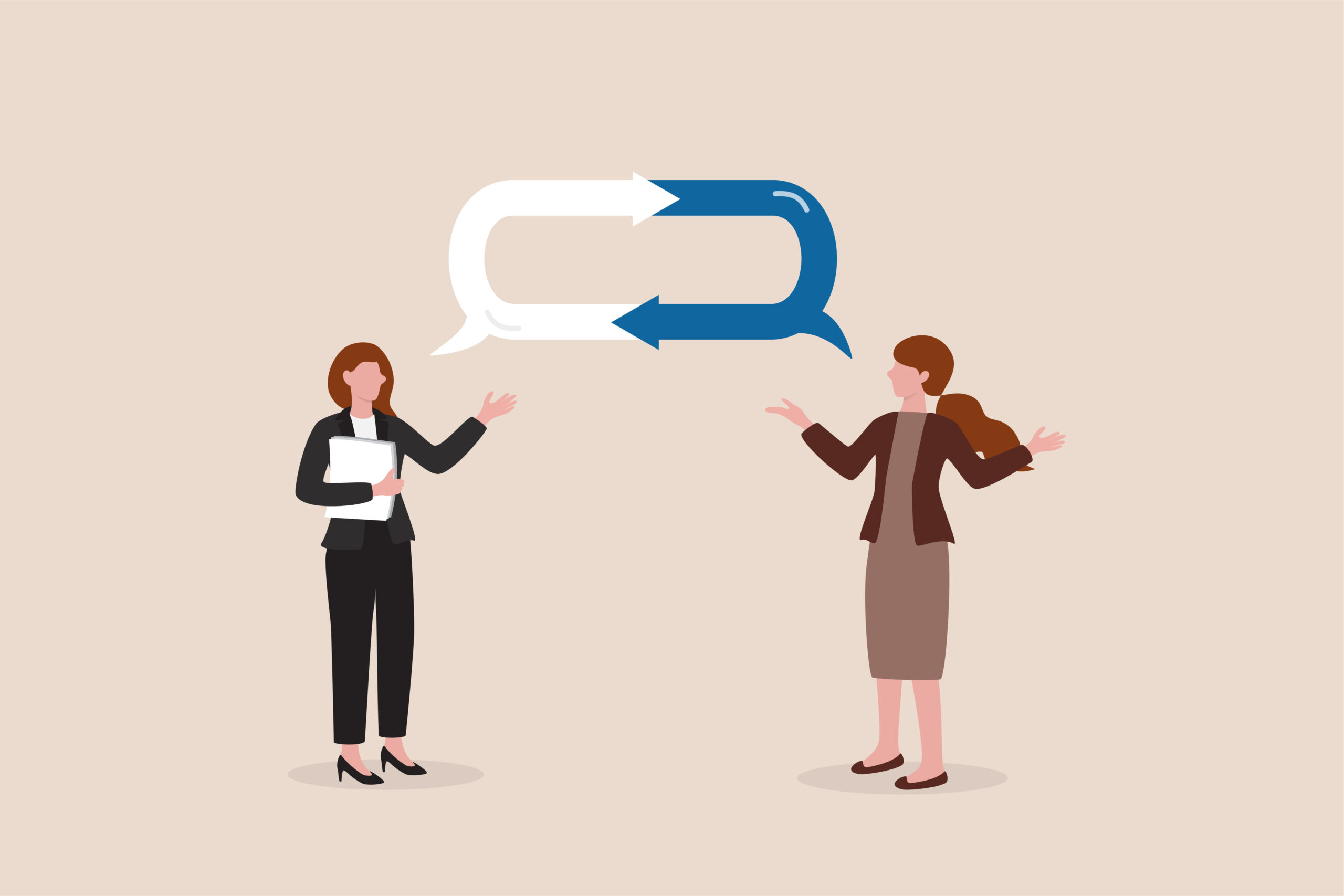Client Stories


Big 4 Bank making it all about customers
Client need
To In an industry facing unprecedented regulation and competition from nontraditional players, while customer and community sentiment is at an all-time low, financial services providers are being challenged to navigate the way forward; balancing their ethical considerations whilst continuing to drive performance.
Customer expectations have shifted and how customers engage with financial services providers is much more segmented than ever before. Services range from those that are considered hygiene in nature and demanded on a self-serve basis to the other end of the continuum, where highly personalised solutions are sought and customers are willing to pay due to their differentiated value.
Regulations have driven a focus on compliance behaviours, often at the expense of engagement with customers; leaving customers feeling unheard and disconnected from the service they seek. The overwhelming findings of the Royal Commission have also identified significant misconduct where
delivering for the shareholder has eclipsed the reasonable rights of other key stakeholders, particularly customers and the community.
There has been recognition of the need to bring greater focus to the customer for a number of years, but too often those initiatives have stopped short of fully aligning the organisation’s focus.
For one big 4 bank, their unwavering vision is to be recognised as one of the industries’ great service companies. They recognised that it was the actions of their people that would determine their success and that a fundamental shift in behaviour was needed to drive a service revolution. This would take time and require ongoing efforts to facilitate a mindset shift, together with top down leadership alignment to deliver on their vision.
The work they had been undertaking was certainly having an impact, but relied on the interpretation and application by each person. This resulted in variances in consistency and speed of change hampering the overall impact.
The solution
Recognising the need to accelerate an unconditional focus on the customer, their desire was to implement a conversational approach and operating cadence that would support the customer and equip their leaders, bankers and support teams with the requisite mindsets, capability and alignment to execute. The customer oriented focus of conversation was paramount, with the premise being that doing the right thing by the customer would also deliver on its compliance obligations. Whilst there was recognition that many best practices existed in pockets of the business, this initiative was about one unified way of engaging customers, not individual ways.
- Structured approach for all bankers to build relationships with their customers that would help them deliver on their business and personal priorities
- Common and consistent customer experience across the bank
- Conversation model that drove less variance in customer needs to meet and improve customer advocacy and NPS results
To support the bank through this major strategic initiative, BTS was chosen for our vast organisational knowledge, deep industry acumen, truly customer focused methodologies and track record in delivering to large audiences in compressed timeframes. The first phase, Immersion, included extensive cross functional engagement to ensure that each customer touchpoint was well considered and addressed. The overwhelming consensus was that the conversation must be focused on the customer and what success looks like for them. Also, by adopting that focus of acting in their customers’ best interests, this would by design also meet their compliance obligations.The immersion phase culminated in the conceptualization of the journey and specific segment requirements.The audience included 2,500 personnel in the Business and Corporate banking segments and incorporated Commercial, Agri, Regional banking, SME, Specialist segments and their support functions. All personnel, including the CEO, his leadership team, every leader and banker completed the journey to drive a consistent, repeatable and reliable customer experience.The Design phase encompassed the development of segment specific scenarios and artefacts, to aid alignment and support the mindset shift whilst building capability.The learner journey was a 5-stage approach that ran over an 8-week period:
- Readiness – Engagement of leaders and bankers in setting expectations, infield observation and assessment to inform current bench strength, aid awareness and build motivation
- 2-day workshop – Discovery based experiential workshop to unpack core customer conversational methodology and tool sets
- 1-day leader workshop – Focused in building conversation acumen mastery to role model, mentor and coach
- Go–Do’s – Business as Usual application of the skills with leader and peer assessment, and feedback
- 1-day simulation – Capstone event to consolidate the learnings and receive expert critique in a competitive team-based environment through interaction with simulated customers
Post-journey business as usual activities included:
- Leader led skill building sessions and one-on-one coaching session incorporated into weekly operating cadence sessions
- Joint field work
- Quarterly in field observations
- Annual leader certification
Results
Customer perspective – “Trust based engagement where I feel heard and understood. There is a focus on what I’m trying to achieve from both a business and personal perspective, and how I can be supported. These conversations are different, the banker is prepared, shares relevant insights, the focus is on me, it is not about being sold to, nor transactional. They are in it for the long haul through the ups and downs. I have a consistent experience each time I interact, its repeatable and I can rely on what the team say and do. I tell my colleagues and friends about the experience and I’m happy to refer to others.”Banker perspective – “I enjoy spending time with my customers and supporting them to accelerate the results they seek. I am prepared, having reflected on prior conversations, crafting relevant insights so that I add value and meeting with me is seen as valuable. Where I meet customers with my colleagues we follow a consistent process, we are clear on our roles and how we jointly bring value, and we welcome each other’s feedback. When compiling credit submissions, I’m able to provide a comprehensive account of the customer now and in the future, and the likely impact of future initiatives. It’s easier to deliver for my customer and my approach is more sustainable for me from a business and personal perspective. My customers call me and seek me out for my expertise and experience. I’m part of their inner circle.”Leader perspective – “I’m really clear on what great conversations sound like. I have a regular and consistent cadence with the team and I’ve been able to better understand my team and their bench strength. We have a shared understanding of what we are working towards and I am purposeful and consistent with my coaching. When meeting customers with my team, I’m clear on my role and I support and enhance the banker’s value and our proposition.”

Driving a successful strategy
Client Need
A leading American software company was in the process of improving customer understanding to increase opportunities and achieve the next level of growth. This vision to improve customer understanding required sellers to enhance their knowledge of the buyers of each product line, the competitive market, and how to adjust the overall sales process to bring value to client engagements.
To heighten their sellers’ skills, the organization partnered with BTS, a trusted partner that had supported the organization on a variety of development initiatives over the years.
Solution
To develop this customer understanding, BTS and the organization collaborated to create a customized solution. The organization’s leadership team was charged with identifying the key behavior changes participants needed to make, and in partnership with BTS, created a learning journey to help employees acquire the knowledge and build the skills necessary to engage differently with their customers.
The result was a three-day program as a part of that year’s sales kickoff meeting, which was conducted virtually and delivered to 3,000 employees over the course of three-hour sessions, run multiple times a day to accommodate the global audience.
Participants went through an immersive business simulation to help them gain a deeper understanding of the market and competition. The simulation was anchored in a case study, which was modeled directly after the organization’s customers’ business, moving through the challenges that the organization was best positioned to resolve.
In the simulation, participants were immersed in a fictional environment, which prompted them to not see from an executive and tactical buyer point of view, but also enable them to build empathy and develop clear insights into their buyers and organizational objectives. Doing so allowed participants to obtain a comprehensive understanding of their competitor’s value proposition and how to differentiate themselves in an aggressive marketplace.
In addition to building customer understanding, participants brought competitive “battle cards” to life in the scope of the simulation. They put themselves in the shoes of their top competitors, focusing on how those competitors across product lines differentiate themselves from the organization.
At the end of each day, participants shifted back to the perspective of their everyday role in a moments-based simulation, allowing them the unique opportunity to practice new behaviors throughout all phases of the sales process. These predominantly concentrated on meeting specific customer needs, but also touched on value proposition and getting to the close of a sale.
Results
Ultimately, leaders of the company observed that their workforce adopted the behaviors needed to become more customer-centric, and more effective through its sales process. Based on these insights, the company transitioned the content created for the sales kickoff meeting to their sales onboarding, which demonstrates the overall success of the learning experience.

Cascading a new sales methodology
Client need
An American identity management organization was in the process of rolling out a new sales methodology and needed to improve its front-line sales managers’ abilities to coach sales reps accordingly.To achieve this, the organization partnered with BTS to help its front-line sales managers 1) understand what great sales behaviors look like, according to the new methodology, and 2) learn to bring those behaviors out in their sales reps.
Solution
BTS facilitators delivered a live, half-day solution for 300 front line, mid-level, and senior sales managers, using a role-play simulation exercise to build fluency in coaching to the new methodology.The simulation, conducted in table sessions, included the following components:
- The six participants at each table engaged in a role-play scenario, with one to two senior-level managers in the coaching roles.
- Before each role play, these coaches received a list of questions and responses; from the latter, they identified ways to bring out the best behaviors in their newer sales-rep coachees.
- Throughout two rounds of role-play exercises, coaches observed coachees’ abilities to:
- Steer conversation
- Focus on one piece of feedback at a time
- Deliver observations without evaluation
- Communicate with honesty
- Co-create a clear roadmap
- Recording these observations into scorecards helped the more experienced managers provide customized feedback for new sales reps, and also added an element of fun.
- Teams took a tactical approach, asking questions throughout the coaching process that yielded gradual progress round after round.
Results
From the first to second round, front-line and mid-level sales managers’ scorecards demonstrated improvement in their abilities to shift conversations and set the stage for further discussion, focus on one piece of feedback at a time, deliver observations without evaluation or calculation, communicate linked requests with honesty, and collaboratively establish roadmaps for success.Overall, the solution was well-received and enriched employees’ understanding of the new methodology, ultimately setting the company up for long-term success.

Implementing change and cultural transformation
Client need
A world-leading mining organisation was in the process of implementing a new operating model. Their original, four-year safety and productivity strategy included applying industry-leading capabilities to world-class assets, while maintaining high quality operations. They recognised that the world’s best organisations improve faster than their peers, and systemically improve safety and productivity. So, the organisation set out to differentiate itself by consistently achieving operational outperformance by implementing a continuous improvement culture throughout all sites.
To do so, the organisation needed to underpin its existing operational capabilities with world-class manufacturing processes and build a productivity-enabling culture. This would allow the organisation to align its strategy, operating philosophy, and principles to become a top-performing organisation — one that leads the sector, keeps its people safe while developing their capabilities, and exceeds expectations for shareholder returns.
To implement this new strategy, the organisation partnered with BTS and another development partner to co-create a learning program that would supercharge deploying this operating model. The program sought to uplift transformational capability within the organisation. BTS facilitators provided a structured program, including on-the-ground coaching and feedback, to support the shifts required to execute this new strategy.
“When you have a high-quality coach, the learning experience is fulfilling and resonates.”
“We now have the required suite of tools to help the entire business moving forward.”“Increased quality in dealing with colleagues, listening to them and coaching them.”“If another opportunity comes to be able to learn more from my coach. I will be jumping at it.”
The solution
The deployment of the new operating model was run in waves at each site and was led by three different types of deployment resources called ‘coaches’. For over two years, BTS provided development programs for each type of coach. Each one included simulations, change and transformation, leadership, and Individual coaching. The goals of all levels of coaching were to close any gaps the deployment team might have, and focused on three areas:
- Build the coaching capability of the deployment team so they would be more effective at shifting behaviour and mindsets in the business
- Build an understanding of the nuances of mining and the client culture in those new to the organisation
- Build an understanding of the new operating model in all coaches
Results
Experience Great Coaching:
- 92 percent of participants reported significant or some change as a result of the coaching
- 96 percent of participants would recommend the coaching to a colleague
Business Benefits:
- 22 percent noted an increase in efficiency in the workplace as a result of the coaching
- 35 percent noted an increase in quality in the workplace as a result of the coaching
- 6 percent noted a retention in talent as a result of the coaching

Leader Lab: Adopting an enterprise perspective
Client Need
An American multinational medical technologies organization was in the midst of significant growth, expecting to double its workforce. To continue thriving as a larger organization and adapt to changing client needs, all employees needed to gain an enterprise mindset. As such, the company partnered with BTS to help its senior leaders adopt a mindset of greater interconnectivity and customer-centricity.
Solution
With BTS’s support, the organization developed a Leader Lab solution. This program would enable participants to work together effectively and gain a holistic, enterprise-wide view of the company.
To accomplish this overarching goal, participants were expected to:
- Collaborate across divisions to identify value-creation opportunities and leverage expertise.
- Balance short- and long-term results to accelerate performance in both mature and emerging markets.
- Prioritize and allocate valuable resources to drive growth across the company’s global footprint.
- Nurture unique leadership strengths to shape the culture and inspire future leaders to grow.
The program, which spanned three days and was conducted entirely in-person, included the following:
- Pre-work – a case study reading exercise, which was modelled after the business and set the scene for the business simulation.
- Strategic planning – outlined priorities and the plan to execute the strategy.
- Running the company – a realistic business simulation where participants joined cross functional teams to practice running the business.
- Debrief sessions – a facilitated post-simulation gathering to discuss performance and observed behaviors.
- Company-led sessions – a platform for company leaders to go deep and explore business challenges and opportunities.
- Execute – activities to ensure application and reinforce learning back on the job.
Throughout the Leader Lab experience, participants engaged in an enterprise simulation where they managed a fictitious company that closely resembled their organization. The simulated company had built strong relationships with its past customers.
However, technology and evolving consumer needs added pressure to meet expectations. Facing these challenges in a simulated environment enabled participants to debate in teams, determine the best possible course of action, and make decisions with input from across different sectors of the business.
After each simulated round, participants took part in facilitated sessions, led by BTS coaches, to explore:
- The results that their decisions had on their performance
- The difficult trade-offs they faced
- How they communicated and effectively worked as a team
In one-on-one conversations, coaches helped participants identify specific leadership strategies and challenges revolving around three central themes:
- Balancing priorities: recognizing the fundamentals, growing in mature and emerging markets, understanding end-to-end business operations to enable an enterprise perspective.
- Innovations in customer-centricity: prioritizing investments that address the voice of the customer, and driving growth through disciplined investment.
- Leading in the industry: balancing organic and inorganic growth when achieving growth, and driving long-term value for both consumers and the broader ecosystem.
Ultimately, these sessions prompted participants to commit to action and hold each other accountable.
Results
Afterwards, participants provided feedback through comprehensive surveys, yielding the following results:
- Quality of sessions
- Most participants were highly satisfied with the program.
- Over half reported that they were “very satisfied” with all aspects of the program, which included customer focus, operating models, relevancy of content, time with BTS coaches, and engagement with peers and leaders.
- Most believe that the program will positively impact their career growth and development, as well as found it applicable and inspiring.
All of the participants agreed that the Leader Lab content was relevant to their challenges as leaders, the insights generated during exercises and debriefs were helpful, and that they learned something new in the process that will influence future behaviors and decision-making.

Cultivating the critical mindsets from the individual up at top 4 bank
Client need
An international bank was facing serious competition from Fin Tech firms, fast-changing customer needs, digital innovation requirements, and an old, slow, constraining structure. To stay relevant they needed to quickly shift to Agile and stand up streams that would drive change at pace. This required structural, procedural, and organisational change, as well as mindset shifts for leaders and teams.
To achieve this goal, the organisation partnered with BTS to devise a coaching solution that targeted mindset shifts at a deep level, creating a disruptive moment for leaders to accelerate the rate of change.
“Our engagement survey increased by six points. Our target was 77, and we exceeded that with a score of 79. This is a significant improvement. We have a highly engaged team and I have no doubt that this experience contributed substantially to the result. There is now more transparency in speaking up when things aren’t going right; we have really seen this happening in the last month. I attribute this change to the program we did with BTS.”
- Leader of bank
The solution
The company set a target to shift mindsets so that:
- Employees saw customer and enterprise success as the goal, not just personal and individual gain.
- Healthy risk was considered natural, and failure was an opportunity to learn and grow
– a better option than playing it safe. - Resources were seen as shared and owned by the enterprise, instead of seeking personal control as the only way to succeed.
- Embracing conflict and tension were considered constructive and creative challenges that led to better customer outcomes.
There were several experiences that helped to disrupt and shift the mindsets, which included:
- A digital, virtual, moments-based simulation experience, which helped employees explore specific moments when they would be challenged to implement new agile behaviors. This approach was team-based and surfaced the true moments of tension so that they could be addressed and planned for.
- Virtual, personalised 1:1 coaching to create deep mindset changes on topics such as engaging others, building commitment and support, influencing, personal authority, speaking up, and challenging the status quo.
Results
The experience leveraged a control group to measure the mindset changes for those receiving the 1:1 coaching. Across the six critical mindsets the firm sought to address, there was an average 17.3% gain in the coached group in comparison to the control group.
Coaching groups’ confidence in their ability to lead and influence others increased by 11%.
In the simulation experience the average score was 9.03/10, and 24 respondents reported an NPS of 75.

Strategy implementation at scale
Client Need
A cloud-based software company was experiencing rapid growth, marked by multiple acquisitions, thousands of high-performing sales transactions, and rising expectations. As a result, the company needed a more consistent go-to-market approach and customer-engagement methodology.To meet this need, the organization’s leaders designed an immersive, simulation-based program that would cascade this new approach to all 29,000 of its sales, solutions, and customer-success group members. The organization partnered with BTS to design a simulation-based learning experience to deliver the training at a global scale in a simple, immersive modality.If executed successfully, this program would be the single largest training program in the company’s history, ensuring organization-wide adoption of its bold new go-to-market strategy, tools, and practices.
Solution
To reach the organization’s 29,000 employees, the program was launched worldwide both virtually and in-person. The two-day experience comprised 300 sessions facilitated by 900 of the company’s sales leaders. In addition, 150 people from BTS offered supplemental support during the sessions.Prior to starting the program, BTS held a series of workshops to equip the program facilitators with extensive resources and training to ensure a seamless experience for participants. The program was closely modeled after participants’ day-to-day work, but designed as a gamified experience that would shift mindsets.In cross-functional teams, participants assumed crucial roles within a simulated account team. Together, the team made collective decisions, responded to critical moments, and advanced customers through the sales cycle, competing against other teams to drive customer success and run the best simulated account team.The competitive aspects of the program kept engagement high, but—more importantly—enabled employees to interact and cooperate, prompting them to break out of silos and gain a better understanding of how to collaborate.A virtual dashboard created by BTS tracked participants’ choices, the resulting outcomes, and kept score. The team best aligned with the new go-to-market and customer-engagement methodologies would win the competition.A team’s overall score was measured by three metrics that captured participants’ abilities to collaborate across all functions:
- The likelihood of a deal closing.
- The value that the team delivers to its customers.
- How well the team works together.
Throughout the program, participants gained a greater understanding of:
- What it looks like to support great customer success throughout the entire account engagement process.
- How to leverage the new methodology to accelerate deal cycles and share this knowledge with the extended team.
- How to balance short- and long-term goals to maximize customer success and company growth.
Results
- 30 days after the completion of the program, the organization reported a 54 percent increase in pipeline generation and a 40 percent increase in tool adoption.
- Based on the results of the initial program, the company plans to make this program the standard training for all distribution employees.
Testimonials
- “The exercises working in the group helped me think through the methodology and apply it to my everyday work.”
- “The [program] was a great way to immerse myself in the methodology and learn from a variety of my peers across different roles.”
- “It was a genuine thrill to see how completely the [simulation] captured EXACTLY what we were looking for, and what our teams need to be successful.”

Running the Leader Lab
Client Need
As part of their talent development strategy, an American dairy organization’s needed to equip its high-potential employees to reach the next level of leadership. Thus, the organization partnered with BTS to design and deliver a customized, interactive, and experiential learning solution: the Leader Lab.
By combining assessments, a business simulation, and role-plays, the Leader Lab develops the critical business and leadership skills required to execute an organization’s specific strategy. Pre- and post-program assessments helped the organization pinpoint critical knowledge gaps and benchmark progress; the simulation challenged teams to respond to realistic, high-pressure business dilemmas with limited resources. All of this increased participants’ understanding of their clients’ and prospects’ most critical profitability drivers, and allowed the high-potentials to observe fundamental leadership behaviors.
Solution
To develop its high-potential employees, 20 of the organization’s leaders went through a two-day, customized Leader Lab experience, which featured:
- Pre-work:
- A personality test that measured each individual’s preferences and style, and identified behavioral watch-outs.
- Reading a business case containing key information as well as business and financial context for the simulation.
- A virtually-facilitated business simulation:
- In groups of four, high-potentials assumed fictional roles representative of the organization’s leadership team.
- These teams competed by running a simulated organization over three rounds, each of which represented one fiscal year.
- Facilitators examined, scored, and debriefed the teams after each round in a central virtual classroom. Leaders received reinforcement on the critical moves needed for success.
- Role plays allowing high-potentials to practice anticipating and responding to various obstacles.
- An immersive assessment that evaluated high potentials’ performance in the face of business challenges.
- Team-specific assessors observed participants in breakout rooms, measuring each participant’s behavior against the client’s competencies model.
- Participants then presented their decisions and results to a select group of senior leaders.
After the assessment center, BTS facilitators created a written report describing each individual’s strengths and areas of development related to the specific competencies needed to perform in their role. Furthermore, the experience concluded with the participants enjoying a one-hour debrief session alongside the assessors to better understand the report and obtain individual development insights.
Results
The program was an overall success. Participants were pushed out of their comfort zones and challenged to understand the business from the leadership perspective. Following completion of the Leader Lab, the majority of participants met the organization’s “critical-quality” expectations, preparing them to advance to the next level of leadership.

Merging two cultures towards a single purpose
Client Need
A leading communications network provider made a major acquisition of an organization of equal size, increasing their influence in the industry. The addressable market doubled with the new product and services mix, creating a significant, immediate opportunity to create cost and revenue synergies.
The organization recognized that culture would be a gating factor to capturing these opportunities and delivering on their commitments. Culture was a lever both companies had paid less attention to in past acquisitions, resulting in a patchwork of organizational values, relationships, and ways of working. In fact, according to results from the enterprise risk assessment leading up to the merger, culture ranked as the second highest risk to the organization’s success.
To realize the aspirations of the newly-combined organization, the organization partnered with BTS to help align all employees to a single purpose, vision, values, and ways of working.
Solution
BTS addressed major parts of the culture and strategy together by engaging the organization at various levels. The following approach would allow employees to understand, define, and engage the organization in its future state:
- A culture diagnostic that would help employees understand the current culture of both organizations, and uncover the biggest cultural strengths and risks within each that could either accelerate or hinder progress.
- Executive Alignment Sessions during which the organization’s top 25 leaders defined and committed to the future-state purpose, vision, values, and ways of working. In addition, leaders prioritized the most practical and tangible shifts that the organization needed to implement. By identifying the pivotal moments in their operating cadence, leaders recognized the need to alter their behavior according to the aspirational values and culture.
- Virtual Working Sessions that pressure-tested pivotal moments across various levels, functions, and geographies in the organization and gathered data on the existing knowledge gaps.
- A Culture Playbook that codified the most pivotal moments in their operating cadence in terms that captured the aforementioned values and culture.
- An improved structure for team meetings and workshops intended to accelerate the transformation and engage leaders with the new vision in a fun, engaging, and impactful way.
- Defining leader expectations linked to the vision level by level, embedding them into the performance management and leadership development process.
Results
As a result of this work, the organization devised simple yet meaningful ways of working that leaders across the organization created and “owned.” The culture playbook and leader expectations brought aspirations from words on a page to fruition.
One year after the work was concluded, the organization completed another Enterprise Risk Assessment. As a result, culture had decreased from the second-largest risk at the time of acquisition to the twelfth-riskiest factor. The organization also accelerated the results of the integration, delivering on synergy target commitments one year ahead of schedule.
Successful integration requires cultural buy-in at every level of an organization. By grounding purpose, vision, and values in mutually-attainable behaviors, employees from both organizations became motivated, embrace change, and operate in an agile manner.
Testimonials
- “I am really encouraged that we got momentum [before the acquisition was finalized], and the alignment session occurred in the week we joined forces as one company. It sends a very positive message to the entire company and reinforces the importance of culture to our future success.”
- “This work is foundational in defining who we are and the opportunities we have in becoming a leader in the industry.”
- “In truth, the culture work [the BTS] team led with us has mobilized our teams and served as a rally cry throughout the pandemic. Serving as our True North! Very cool.”

Developing healthcare leaders’ capabilities at scale
Client need
A multinational medical device and healthcare organization needed to better understand, practice, and apply the critical capabilities of effective leaders.
To achieve this goal, the organization partnered with BTS to design a program for over 20,000 of its leaders. Together, they facilitated meaningful conversation amongst participating teams, coaching each leader to develop these critical capabilities over a four-phase journey.
The solution
Throughout the 12-week virtually facilitated journey, which was delivered in 13 languages, participating leaders learned and practiced four key leadership skills:
- Inclusive leadership: respecting and valuing diversity of thought, perspective, and approach
- Building trust: treating everyone fairly and maintaining open and honest communication patterns that inspire teammates to speak the truth
- Creating culture: fostering an environment in which all can thrive but also challenging employees to be at their best
- Coaching and developing: pushing teams to their full potential by assessing individual strengths and development areas
To build these skills, participating leaders followed a framework called “See-Hear-Speak,” which culminated in a module focused on coaching and developing others:
- See: building trust and drive inclusion by making others feel seen
- Hear: helping teammates understand the value of their input
- Speak: creating culture by communicating with clarity and compassion, after seeing and hearing
Throughout each phase, they experienced:
- Learning bursts, or digital scenarios during which to practice these concepts
- Supplemental online training using existing company content
- Go-dos, which are action items to be completed back on the job
- Peer pods, building trust through constructive conversation
- Development of key takeaways and commitments
After wrapping up the 12-week journey, each participating leader received a sustainment plan designed to help incorporate these new skills over a six-month period.
Results
The program yielded completion of over 11,000 peer pods and 269 1:1 coaching sessions. Direct reports of managers who completed the program have meaningfully higher employee engagement-survey scores than those whose managers opted out. Analyzing these scores four months post-program shows positive effects on profit, revenue, safety, and productivity as well.Additional highlights include:
- Overall evaluation score: 4.3/5
- Completion rate of 97%
- Participants gave effectiveness of training a score of 4.2/5
- +129k go-dos completed
Client feedback
"I've seen a big change in my manager. They're listening more and asking more questions, and while they've still got a ways to go to be a good manager, I'm seeing real progress."
“I began to realize that when you step back, you bring forward curiosity. I was able to notice someone else’s state and I know they felt seen because they came up to me later and said ‘thank you!’
“I’m finding more opportunities to get off ‘auto-pilot,’ get out of the box, and be more curious, really listening to others.”
“I’m actively putting myself into a more empathetic mindset. I’m asking my people more questions, probing deeper into the data, and coming back with insights I’ve never seen from them before.”

Aumentando la centración en el cliente en una organización de servicios financieros
Necesidad del Cliente
Frente a las desafiantes expectativas de los clientes, una organización multinacional líder en servicios financieros necesitaba transformar su modelo comercial, adoptando un enfoque más centrado en el cliente y basado en la venta consultiva. También necesitaban trasladar este cambio a una red nacional, desarrollando la mentalidad y las capacidades necesarias para ejecutar esta transformación.Para dotar a sus banqueros de las herramientas necesarias para prosperar en un entorno cada vez más complejo, dinámico y digital, la organización se asoció con BTS para diseñar un programa de aprendizaje personalizado.
Solución
El viaje resultante combinó evaluaciones, formación en ventas, formación en productos y actividades en las sucursales. Durante nueve meses, 3,025 banqueros comerciales participaron en un viaje digital autodirigido. Estos líderes financieros adoptaron una mentalidad más centrada en el cliente:
- Someterse a una evaluación inicial en línea, que se utilizó para dividir a los participantes en grupos por nivel de rendimiento.
- Completar los conocimientos prácticos, o tres módulos virtuales guiados que permitieron comprender los motivos de la transformación.
- Poner a prueba los nuevos comportamientos en dos simulaciones sin riesgo, completando los conocimientos adicionales que fueran necesarios.
- Completar tres de los siete sprints diferentes, cada uno de los cuales contiene un Go-Do, que es un elemento de acción para aplicar en el trabajo
- Participar en una evaluación final que determine los planes de mantenimiento.
Resultados
Los participantes informaron de lo siguiente como resultado del programa:
- 215 renovaciones como resultado de los Go-Dos
- El 84% utilizó argumentos racionales para cuantificar el valor de su oferta
- El 88% fue capaz de cerrar la siguiente reunión
- El 90% fue eficaz en la renovación de las ventas de productos
- El 91% cerró acuerdos más rápidamente

Smoothing graduates’ transitions into corporate life
Client need
A global metals and mining organization sought a partner in enabling new graduates successfully transition into corporate life. Such a program would help recent graduates examine the organization’s culture, determine whether their own behaviors and values would mesh with it, and adjust accordingly.
The solution
The organization partnered with BTS to co-create the Global Graduate Excellence Program, streamlining new graduates’ transition to and development at the organization. Over a two-year span, the program:
- Explored the organization’s unspoken “rules” which made the difference between success and failure.
- Enabled participants to identify that which limited their potential.
- Provided the skills and tools these new graduates needed as a foundation for a promising career.
The program contained experiences that helped disrupt and shift the graduates’ mindsets, including:
- Virtual, personalized 1:1 coaching on topics such as employee engagement, building commitment and support, influencing, personal authority, speaking up, and challenging the status quo.
- Virtual webinars allowing graduates to experiment, collaborate, and role-play with a small group of peers, covering topics such as transitioning into the organization, creating a personal brand, and building the future.
- A Graduate Summit about supporting development through personal resilience, giving and receiving feedback, and collaboration; the summit integrated the entire journey with a celebration of achievements
These experiences combined all the mindsets and behaviors that were essential to establishing the right habits for recent graduates.
Results
BTS has delivered the Graduate Development Program to 549 graduates across five summits, 110 webinars, and 2,496 coaching sessions. Following program completion, the organization found:
- Increases in efficiency (40%), quality (17%), and retention of leadership talent (11%).
- That 97% of graduates reported experiencing change (51% experienced significant change), shifts in self-confidence (72%), forming productive relationships with people, action-orientation, and decision making. 98% of participants felt that the program met their expectations (exceeded expectations for 60%), and 92% met the program objectives (45% exceeded their objectives set).
- That 97% of participants would recommend the 1:1 coaching, and 94% would recommend the Summit experiences.
Client feedback
- “I have developed deeper relationships with my peers and leaders. This has improved teamwork/morale and lead to better efficiency for both myself, my team, and the company.”
- “The value that I have gained from the program has been enormous. I have been able to target development of key skills that were important to me, of which have significantly improved my personal and professional levels in the workplace.”

Equipping high potentials as catalysts of future change at the Abu Dhabi School of Government
Client need
The Abu Dhabi School of Government, established to develop the city’s civil servants, needed to cultivate the right mindsets and capabilities in its mid-career, high-potential employees. These high potentials would lead the Abu Dhabi government into the future as part of an economic development plan that would create a solid succession pipeline across all government entities.
ADSG partnered with BTS to launch the first learning journey designed to achieve this goal, which was called The Leader Program.
Solution
The Leader Program (TLP) aimed to accelerate the leadership abilities and expand the knowledge of over 100 high potential Abu Dhabi government employees. TLP built participants’ abilities to lead through three modules: Leading Self, Leading Others, and Leading the Nation through Innovation.
The program incorporated a unique “ecosystem” that enabled participants to experience leadership development as a continuous way of life, and consisted of six elements:
- In-class training: Three, approximately five-day-long modules featuring experiential learning sessions, either virtual or in person, and moments-based leadership simulations.
- Virtual coaching: a four- to five-session one-on-one flexible coaching journey, during which BTS coaches guided participants on the specific mindset shifts that would nurture their growth and eventually benefit society.
- Conferences and events: BTS arranged for access to local and international conferences where participants could build stronger networks.
- Individual projects: Leaders were assigned pre- and post-work tasks for each module, including: seven Go-Do’s (action items to be completed within the flow of work), iLeads (self-paced simulations), self-assessments, online courses, and a Personal Development Plan.
- Meetings with government leaders: At least once every three months, BTS arranged for participants to meet with various high-ranking government leaders to gain perspective through active dialogue.
- Job rotation: Leaders were placed at an organization of their choice in the public or private sector and completed a job rotation over a period of two months.
To wrap up the yearlong journey, participants:
- Prepared, implemented, and tracked a final innovation project that addressed a real-life government challenge.
- Completed an assessment module by presenting the journey’s quantitative and qualitative impact as well as their learnings about leading themselves, their teams, and their nation.
How it works
In summary, facilitators assessed leaders’ progress through:
- Daily surveys tracking knowledge obtained from in-class sessions.
- An “Overall Impact Measurement Survey” tracking concept application.
- Post-module assignments that reinforced concepts.
- Post-module virtual simulations that gauged knowledge retention.
- A job-rotation project measuring the level of learning implementation.
- A “Final Innovation Project” and assessment module designed to ascertain overall learning impact and ROI.
Results
In the following three years after the program, participants’ progress included:
- 99% Go-Do completion
- 94% job rotation project completion
- 29 innovation projects (83% of all) implemented across diverse government entities, yielding:
- An anticipated 94% improvement in environmental impact
- An anticipated 97% improvement in long-term citizen happiness
Additionally, TLP won a Gold Brandon Hall Award for “Best Unique or Innovative Leadership Development Program.” A new cohort of 100 leaders are expected to complete the program in the near future.
Client feedback
“[The] leadership development program has really supported me, and has been one of the most gratifying developmental experiences of my career.” – Participant from the Abu Dhabi Department of Culture and Tourist
“[The program had a positive impact on wider society] by developing future leaders who are also parents [and] will transfer knowledge not only to their colleagues, but also to their children, who will impact future generations.” – Participant from the Abu Dhabi Environment Agency

Readying high-potential talent for senior leadership roles
Client need
To prepare key talent for senior leadership roles, a multinational pharmaceutical and biotech organization needed to create a development program that would allow participants to practice responding to leadership challenges in a safe space and receive actionable feedback that would accelerate their personal and professional growth.
To build the capabilities needed for successful leadership, the organization partnered with BTS to create a customized program that touched on areas such as:
- Fostering an enterprise mindset
- Collaborating across boundaries and siloes
- Championing diversity of thought and perspective
- Taking risks and showing conviction
- Demonstrating business acumen
The solution
BTS created a customized Virtual Individual Assessment (VIA) wherein their participants encountered a “day in the life” of a senior leader at a simulated version of their organization. The VIA allowed them to participate in business and social acumen-building activities that mirrored the experiences of leaders working one or two levels above their current role. BTS assessors evaluated their behavior during the simulation, later providing written and verbal feedback.
These were the desired outcomes:
- Creating self-awareness around participants’ own strengths, development areas, and relative success as a leader
- Building knowledge of how the business works and a global network to create enterprise-wide impact
- Widening participants’ aperture to think more strategically and future-forward
- Creating targeted development plans aligned with participants’ goals and aspirations
- Accelerating participants’ readiness and excitement for future leadership roles at the organization
Results
This particular program led to the following outcomes:
- 100% of participants were receptive of and agreed with the feedback they received from their assessors
- 100% of participants committed to next steps and follow-up actions, collectively committing to over 300 Go-Dos, which are a set of action items to be completed back on the job
- 40% of participants have been promoted at least once
- 64% of participants are on one or more succession plans
- 92% of participants have remained at the organization
The program was such a success that it spurred the creation of over 15 additional development programs at the organization. These programs were wholly tailored to critical roles across the organization, giving their talent the opportunity to “try on” next-level leadership roles in their desired career path.
Client feedback
- “What a great experience! I hadn't anticipated the ability of the assessment center to replicate work stress and the challenges faced at work. I was actually happy that I was good at bits I am good at in my job, but more importantly, messed up in the same way I do at work, which made the feedback feel relevant and insightful.”
- “Great opportunity to stress test my learnings and capability, as this role goes beyond my current scope and skillsets.”
- “A good opportunity to hold up a mirror…We all have blind spots, and now I recognize mine.”
- “It’s amazing how you can see in a short amount of time what the core issues are.”
- “This gave me a great opportunity to learn about the challenges of a senior leadership role.”

Increasing customer centricity at a financial services organization
Client need
Facing challenging customer expectations, a leading multinational financial services organization needed to transform its commercial model, adopting a more client-centric, consultative selling-based approach. They also needed to cascade this change to a nationwide network, developing the mindsets and capabilities needed to execute this transformation.
To equip its bankers with the tools to thrive in an increasingly complex, dynamic, and digital environment, the organization partnered with BTS to design a customized learning program.
The solution
The resulting journey combined assessments, sales training, product training, and in-branch activities. For nine months, 3,025 commercial bankers participated in a self-directed digital journey. These financial leaders adopted a more client-centric mindset by:
- Undergoing an initial online assessment, which was used to divide participants into groups by performance level
- Completing know-hows, or three guided virtual modules that built an understanding of the reasons for transformation
- Testing new behaviors in two risk-free simulations, completing additional know-hows as needed
- Completing three of seven different sprints, each containing a Go-Do, which is an action item to apply back on the job
- Participating in a final assessment that determines sustainment plans
Results
Participants reported the following as a result of the program:
- 6,215 renewals were reported as a result of the Go-Dos
- 84% used rational arguments to quantify the value of their offer
- 88% were able to close next meeting
- 90% were effective in renewing product sales
- 91% closed deals faster

Shifting behaviors that are crucial for future success – at scale
Client need
After adopting a new strategy, a European multinational food packaging and processing organization supported its execution by undergoing an ambitious cultural transformation. Two focus areas of this effort were improving its meeting culture and helping employees learn from successes and failures. The organization’s leaders partnered with BTS to leverage a “sprint” approach to changing behaviors at scale, enabling employees to work in a more productive, dynamic, and capable fashion.
The solution
The first sprint, which focused on meeting management, reached 2,000 employees around the world over the course of two months. The approach included recruiting a network of culture “champions” from all levels and geographies in the organization, empowering them to drive change and implement specific Go-Dos (action items that shift habits in the flow of work) with their colleagues (managers, peers, and teams).Champions were set up for success by:
- Starting with a 3-hour network kick-off and change-upskilling session
- Moving on to a 2-hour sprint kick-off session, going deeper into the “why” and “how” of the sprint topic
- Concluding each sprint with a 2-hour close-out session, assessing impact and ensuring continuous learning
During the second sprint, which lasted four months, an extended set of participants set out to strengthen a culture of learning from success and mistakes. Following the same setup as the first sprint, these culture champions conceptualized growth mindsets, psychological safety, and lessons learned. They also received Go-Dos centered on risk-taking, experimentation, creating psychological safety, and sharing knowledge acquired; all this began a broad movement around learning from both success and mistakes.
Results
Findings from both sprints indicate a clear impact on actual on-the-job behaviors:
- Average hours spent in meetings per week reduced from 21 to 18
- Average number of participants per meeting reduced from 6 to 5
- People who reported positive experiences in meetings increased from 56% to 69%
- Number of people answering affirmatively about having a growth mindset and experiencing psychological safety in their teams increased by 5 percentage points
- Number of people who reported completing “lessons-learned” activities often increased by 23 percentage points
Champions also reported improved curiosity, engagement, discipline, clarity, awareness, focus, and overall outcomes. They also embrace simple interventions that bring efficiency, open up conversations around psychological safety in teams, and apply a growth mindset that colleagues have been longing for.
Client feedback
- “Overall, I have tremendously enjoyed working with you on our project and believe we have really been able to achieve successful outcomes together. Both sprints have had successful outcomes and we have been able to build a very motivated group of culture champions.”
- “It is fantastic to see BTS involved in the other programs. Today we finalized the first sprint, and we already can clearly see concrete results! Well done! BTS is making a difference at our company!”

Closing gaps in potential for sellers and sales managers
Client need
A multinational industrial gas supplier’s Asia-Pacific division conducted office and field visits throughout its regional salesforce. After analyzing its current ways of working, local sales strategies, and client interactions, the organization observed several behavioral gaps. To equip sellers to better meet clients’ needs, the organization partnered with BTS to design and deliver an interactive learning journey that would build sellers’ skills and mindsets, as well as managers’ coaching mindsets and skills.
The solution
The resulting program would enable 120+ of the organization’s sellers and sales managers across six countries. The virtually facilitated program included two separate learning journeys, which were facilitated in four languages: An Account Manager journey, which enabled participants to:
- Meet with clients more regularly, aligning with their buying cycle
- Define objectives before client meetings, conveying value through conversational techniques
- Use a collaborative negotiation model, defending or escalating pricing when needed
- Resolve objections
- Manage the funnel
- Prioritize accounts and opportunities
A Coaching journey that featured 1:1 coaching sessions on:
- Setting clear expectations
- Assessing team performance
- Developing sales managers’ coaching mindsets and skills
- Go-dos, or action items to be completed back on the job
Throughout both journeys, participants experienced 15 virtual touchpoints.
Results
The Account Manager journey produced the following results:
- Net Promoter Score of 89
- Facilitator effectiveness: 4.5/5 over 90 virtual sessions
- 99% (of 693) Go-Do's completed (a Go-Do is an action item to be completed back on the job)
- Participants submitted a case study demonstrating that they:
- Applied at least two BTS tools
- Won the deal
- Tracked the opportunity on an internal CRM system
- Total deal amount from the 87 submitted cases: 17 million USD!
The Coaching journey produced the following results:
- 80% go-do completion (of 119 go-dos)
- 4% growth in observable behaviors
Testimonials
“[We gained] 35 new customers, better preparation prior to customer visits and proposition of the right product mix, [and an increase of] three customer visits per day after the program (from two to five visits).” – Head of Regional Sales Methods
“After the virtual training, [we experienced a notable] increase in entry on sales funnel. Feedback from sales leaders [shows] that 60-80% of the sales reps now not only seek approval on pricing, but also know how to gather more information by asking questions.” – Sales Force Methods Manager

Aligning leaders through structural transformations
Client need
A national pharmaceutical organization needed to change its leadership and shift its stance on consumer innovation. To achieve these structural transformations, the company partnered with BTS to equip its leaders with the critical tools for success. The goal was to align leaders to the critical capabilities essential to strategy execution, including agility, innovative thinking, a common sense of purpose, and coaching.
Solution
A leadership behavior development program, initially designed for just the top 70 members of the organization’s leadership team, was eventually escalated to 200 of its senior leaders. Paced over three leadership sprints, the learning journey consisted of the following components:
- An organizational playbook that defined the critical mindsets required by the strategy change
- A gamified simulation experience encouraging peer-to-peer team learning, vulnerability, and deep interaction across the region
- Virtual and personalized on-the-job coaching, featuring 1:1 support
- Peer-to-peer pods supervised by BTS facilitators
Results
The experience became a strong platform upon which the whole leadership team and CEO could role-model their expectations and reinforce them in the flow of work:
After completing the program, 100% of participating leaders reported that they strongly believe that they have the necessary tools to inspire change from their employees, and that they will strive to be better coaches going forward. By employing these new tactics in the future, leaders are committed to shifting to new customer segments, exploring ecommerce strategies, and adapting to the changing needs of consumers.
Client feedback
“The BTS program has been the most effective corporate learning I have had throughout my career. This valuable experience has shown me that effective mentoring can make a significant impact to me as a member of the leadership team.”
“I look forward to improving my coaching role within my own team. I have also improved my capability to address concerns directly with my leader, which has led to a trusting relationship.”

Encouraging leaders to improve employee engagement
Client need
After receiving dissatisfactory results from an employee survey, to transform its culture, a Spanish information technology and defense systems company identified the need to improve employee engagement. Thus, the organization partnered with BTS to create a program that encouraged its leaders to develop new leadership skills aligned with the cultural transformation and motivate its employees.
Solution
In partnership with the company’s Executive Committee, BTS developed a Manager Playbook, which outlined the behaviors of a great manager at the company. The Playbook was designed with middle managers in mind because of their outsized impact on the organization and its culture. The company’s top 120 senior managers would attend an alignment session where they refined and aligned around the Playbook. Furthermore, the middle managers would go through a learning journey, enabling them to live and practice the Playbook behaviors back on-the-job.
Results
After completing the sessions, participants achieved auspicious results:
- Net Promoter Score of 72.4; Overall 4.8/5
The majority of participants reported improvement in the following:
- 92% of managers understood leadership expectations
- 94% recognized the impact of their decisions
- 88% identified the best methods for delegation
- 96% realized the importance of developing people
- 95% improved their ability to actively listen -- making an effort to follow up and manage difficult conversations with employees
According to the employee survey, engagement ratios improved both in managers and in the company:
- +20% managers
- +12% company
- +46% managers’ internal NPS
The overall company improved communication, generate alignment, team commitment and performance, and exercised more inspirational leadership.
Client feedback
"Until now I had not visualized the importance of something we do every day, giving feedback. Contextualizing its importance in a good use and its impact... furthermore using the tool has given a lot of value to this training. Thank you.”
“Undoubtedly (the communication tool) is a valuable ally to organize ideas and establish an effective communication script without leaving loose ends. In sensitive issues such as economic or compensation, this aspect is key.”

Empowering leaders to create a winning commercial strategy
Client need
A multinational financial services organization was undergoing a vital transformation to become more customer centric. The change entailed significant restructuring and creating new, critical positions within the company. The organization partnered with BTS to design a learning program that would help leaders adapt to these new positions and enable them to lead the execution of the new commercial strategy.
Solution
The program sought to galvanize 20 divisional directors and 100 district leaders in charge of 3,000 branch offices and the entire commercial strategy.
The journey encompassed:
- 1:1 coaching sessions and short seminars between the divisional directors and district leaders
- Coaching pods designed to shift mindsets and create a foundation for a constantly transforming organization
- A commercial leadership program that simulated a bank’s district and the challenges faced by leaders, allowing them to experience and understand their new roles
- An Innovation workshop focused on Design Thinking to create experiment plans, which aimed to improve commercial strategy and customer service
Results
Following the program:
- 97% of participants completed their post-program actions
- 68% of participants engaged in impactful 1:1 conversation
- 57% of participants recognized the need to adjust their style from directing to inspiring
- Record-breaking Net Promoter Score from branches
- 70% of participants strengthened relationships with top clients
- 60% of participants saw improvement in business results
Additionally, 10 teams created action plans using Design Thinking principles and presented them to a committee. While only three were supposed to pass the final phase, 10 plans were ultimately selected.
By setting clear expectations, developing management skills, and stressing the importance of structural transformation, the learning program empowered leaders to develop their sales, leadership, and innovation capabilities.

Enhancing human capital management through strategy implementation
Client need
The Portuguese branch of a financial services institution sought to implement a transformative strategy for human capital management. To support this transition, the branch partnered with BTS to create an implementation strategy that would focus on creating ownership of the change.
BTS defined the key mindset shifts for the main stakeholders – Managers, HRBP, and Individual Contributors – required by this behavioral change. After receiving the training needed to shift their mindsets, leaders, equipped managers to drive changes in their teams. This transformation aimed to have a profound impact on employees at all levels in the organization.
Solution
BTS partnered with the organization to develop a program comprised of four sessions designed to reach 590 managers. These sessions were designed to gradually shift the mindsets of main stakeholders and enable managers to cascade the message to their teams. With six pre-planned Go-Dos for managers and their teams, which are designated action items to be completed back on the job, leaders and contributors worked within the platform, establishing a tactical plan to improve the branch’s overall efficiency.
Results
As a result of the program, the leaders from this branch saw significant progress, including:
- 470 actions created
- 80% of participants completed the program
- 5,000 individual contributors impacted
When asked for feedback, 4.5 out of 5 employees stated that they would strongly recommend the program to a colleague. The employees from this branch also leveraged the platform twice as much as employees from branches in other countries, demonstrating the resounding effect that the program had with the participants.

Driving strategy execution virtually at Tetra Pak
Client need
Tetra Pak, a global food packaging and processing company with many long-tenured leaders, recognized that the mindsets enabling past success would not necessarily sustain it. Thus, Tetra Pak’s leaders set a goal: to become a packaging company of the future. To do so, they implemented a new business strategy that would increase its focus on sustainability, quality, innovation, and customer centricity.
To bring this vision to life, Tetra Pak’s leaders identified the behaviors necessary to drive new directives, then partnered with BTS to develop its leaders. Together, Tetra Pak and BTS designed an initiative that would reach 2,000 mid-level leaders – a diverse group spanning all functions – just below the company’s top 150 executives. Due to their far-reaching influence over Tetra Pak’s more junior employees, these mid-level leaders were crucial to implementing a new future-focused strategy.
Driving the strategy with mid-level leaders
Despite being fundamental to Tetra Pak’s future, the critical behavior changes would not be easy to implement. The leadership team needed to shift from focusing on past successes to anticipating the needs of the future.
To accelerate the mid-level leaders’ mindset shifts, BTS and Tetra Pak co-created an immersive six-month journey with three key phases. As a result of COVID-19, the program would be delivered in a fully virtual environment.
A six-month journey to drive behavior change
“COVID required us to work closely with the client to reassess and redirect early on in the development.”
In the first phase, participating leaders used BTS’s Leadership Signature solution to explore personal leadership motivations, imagining the company’s collapse and formulating reasons for its failure. This activity helped build the case for change. After developing this understanding, participants identified their own personal strengths and leadership motivations, focusing specifically on how they could support Tetra Pak’s new purpose and strategy.
The second phase of the journey focused on leading others. Participants worked to develop a “Multipliers” mindset, or the ability to get the most out of one’s team by amplifying individual intelligence – a concept developed by Liz Wiseman in her book of the same title.
The final phase of the journey was devoted to leading the business. Leaders experienced a customized business simulation which allowed them to practice the new behaviors in a risk-free, dynamic, and challenging team environment. During the simulation, leaders formed teams and assumed the most senior leadership roles in the company, competing to deliver the best results over multiple rounds. This forced leaders to weigh the tradeoffs inherent to the strategy and make consequential decisions, overall improving their understanding of what it takes to turn strategy into action.
Due to COVID-19, the program was delivered in an entirely virtual environment, featuring LinkedIn Learning courses and Go-Do activities hosted on Tetra Pak’s internal platform. Go-Do’s are predesigned actions or experiments that would enable participants to act on their learnings, incorporating them from the journey into their workflow.
The impact
The Evolve Program has catalyzed substantial change throughout Tetra Pak. Exposing 2,000 influential leaders to the same experience disrupted old mindsets, allowing them to explore new capabilities and ways of working. All this has created momentum, and Tetra Pak’s culture has clearly started to shift:
- 98% of participants have applied their learnings back on the job
- 60% of leaders have seen tangible business impact following their participation
Client feedback
“The amount of honesty… in sharing with each other was amazing. [I] learned things about myself and others that I will reflect on now and in the future.”
“Shaping my [my own leadership style] was a great journey, sharpening my views of myself and [teaching me] how to use my strength best in leading my team.”
“[I gained] a shared mindset among leaders that have gone through the program and a new network of colleagues to reach out to and share, encourage, and challenge each other.”
“We can appreciate the challenges faced by [senior leadership], especially during the business simulation session… It is even more important that once you commit to a decision, then fully support it at all levels.”
“[I learned] to see things with an end-to-to-end perspective and focus upon cost and efficiency, [and] most importantly, to add customer value.”
“We can appreciate the challenges faced by GLT, especially during the business simulation session… It is even more important that, once you commit to a decision, [to] fully support it at all levels.”
“More smiling faces.”
Testimonial
Evolve [was an] eye-opening experience that allowed me to focus on what’s important and what my strengths are, [as well as identify] key levers that would allow me to inspire and motivate others. The bonding between the team was so strong; it was a year and a half [throughout which] we met every 2-3 months.
The program is an eye-opener, revealing that “I can do things at my level, without waiting for the company. What can I do within my department, my team, etc.” Evolve drives people to do things themselves without waiting for guidance from the organization.
- Elena Girardo, Tetra Pak’s Global Head of Talent and DEI

Finding innovative solutions to advertise global products
Client need
A multinational conglomerate needed to find new, inventive ways of operating during the pandemic. The organization partnered with BTS to design a global leadership program to help 30 of its senior leaders broaden their thinking, ideate solutions, and develop a greater capacity for innovation.
Solution
The journey encompassed two years of innovation training during which leaders developed new ideas to apply back on the job. With the onset of Covid-19, the program shifted to a virtual format. Participants continued to innovate, brainstorm, and develop the organization’s product marketing, all while in a fully virtual environment. At the end of the session, leaders presented their final ideas to the CEO and executive team.
Results
Over the course of two years, these exercises generated promising results.
One of the organization’s most senior leaders used BTS tools and methods to design and implement a weekly seminar-series for over 150 teams. The leaders then showcased their work-in-progress prototypes across engineering, product, and design teams, simultaneously racing to unveil a highly anticipated product amid the pandemic.
The CIO of the organization applied the tools to prototype and launch a digital portal that allowed its clients to easily manage their cash flow streams. Today, the solution processes billions of transactions per day from every revenue channel and provides predictive advances for future earnings.
Client feedback
“The approach helped us to ship a high quality, polished and cohesive experience [of the product] on Day 1 that with a well-considered user interface and blisteringly-quick loading times.
“Applying the techniques, which was scary to so many, resulted in a much stronger, supportive, inclusive infrastructure team. We proved that everyone can share an equal or appropriate load, and that everyone can contribute to making [the organization] a premium place to work.”

Virtually aligning an international pharmaceutical company to an ambitious new leadership framework
An international independent pharmaceutical company partnered with BTS to implement an ambitious new leadership framework that would serve as the backbone for the company’s cultural transformation, as well as all Human Resources processes.Initially, the organization planned to host the experience as a face-to-face leadership event in Barcelona, but this was canceled due to the COVID-19 outbreak. Instead, the organization collaborated with BTS to design an innovative, virtual journey, leveraging digital platforms to create a highly engaging experience.To bring the journey to life, BTS hosted multiple events for over 250 participants at a time on Microsoft Teams, each with breakout rooms and two Digital Operators. During the journey, participants completed BTS’s “Portrait” leadership assessments that evaluated their strengths and weaknesses, and were both customized and mapped to the company’s leadership model.Before the event, all 22,000 employees competed a self-paced Swiss VBS module that introduced them to the new leadership model. After the event, the client entered a rollout phase which made possible by BTS’s “Get Togethers” (a digital meeting tool that acts as an event platform and cascade vehicle), sharing the learning experience throughout the organization.The virtual events and Portrait assessments were delivered to the organization’s top 700 leaders, while the organization’s remaining 22,000 employees took part in “cascade” sessions organized by local and regional management. BTS supported the leaders in charge of the cascade process by developing a comprehensive facilitator guide, and also by offering email and phone support.
Technological innovation and hidden talents
BTS successfully combined multiple skills, practices, and technologies across the business to deliver an innovative, high-impact experience at scale. The pilot sessions were well-received (see below), and all 700 participants submitted actions to take back on the job using Act@BTS, BTS’s proprietary email accountability tool.Ultimately, the program was a success – the organization seamlessly shifted to a virtual environment, with little disruption to the learning experience or diminishment to the program’s impact.
Program impact
“This project was a fantastic demonstration of our ability to work seamlessly across offices and practices in a virtual, ever-changing world.”
- 4.5 out of 5 participants agreed that “[they were] looking forward to cascading the Client Leadership Model to [their] teams.”
- 4 out of 5 participants responded, “I am able to apply what I have learned in everyday situations.”
- 4 out of 5 participants agreed that “The sim contributed to [their] understanding of the Client Leadership Model, along with how to apply it.”
- 4.3 out of 5 participants agreed that they had “a better understanding of the Client Leadership Model, and how to embody it.”
- Participants rated the overall journey 4 out of 5.
Over 1,500 cascade meetings were organized by the company’s employees around the world.

